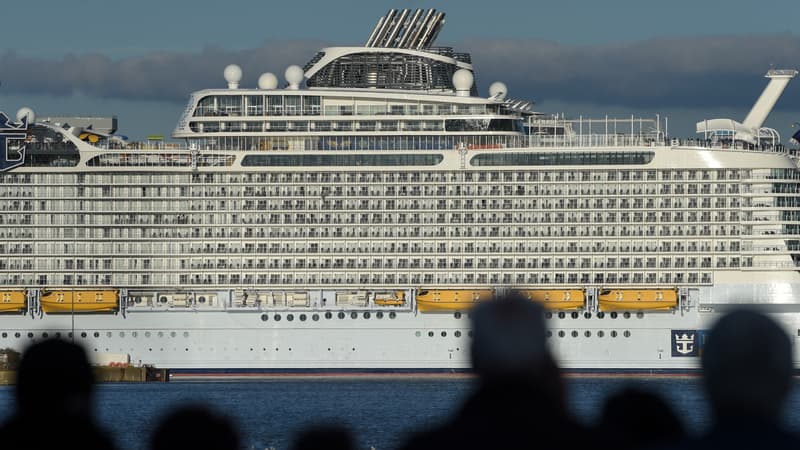That Covid seems far away. Just over four years ago, panic broke out on the Diamond Princess cruise ship off the coast of Japan. In February 2020, 712 people out of a total of 3,700 passengers were infected by the SARS-CoV-2 virus, resulting in a total of 14 deaths.
In the wake of lockdowns and health restrictions, cruise attendance plummeted. From 29.7 million passengers in 2019 (then a record), passenger numbers fell to 5.8 million in 2020 and then to 4.8 million the following year.
With growing concern about environmental issues, would the industry recover from such a cataclysm? The question will not last long. From 2022, and despite the fact that restrictions are still in place in many Asian countries, more than 20 million passengers will embark throughout the year. And from 2023 onwards, new records will be broken. Last year, 31.7 million people took a cruise (7% more than in 2019).
And this year the record should be broken. CLIA, the Cruise Lines International Association, estimates the total number of passengers in 2024 at 35.7 million, revising upwards by one million its previous forecast from last March. Growth of 17% in one year, particularly strong in North America but also in Europe (+15%).
Passenger rejuvenation
Despite the war in the Middle East, slow growth in European economies, inflation and tensions over purchasing power, cruises are booming. Even in France, which remains a small market on a European scale (580,000 passengers in 2023, compared to more than two million in Germany and the United Kingdom), cruise travel is gaining ground.
The North American market remains by far the most developed with 18 million passengers (+17.5% in 2023) compared to 8.2 million in Europe. But on both sides of the Atlantic, the enthusiasm is the same.
First, with a rejuvenation of passengers. The average age of cruise passengers in Europe is 49 years old, compared to 52 before Covid. Globally, it has fallen to 47 years old in 2023. Above all, it is a sector that is succeeding in attracting new customers. 27% of passengers took their first cruise last year.
Marie-Caroline Laurent, Clia’s managing director for Europe, attributes the success of cruises to “more varied products” than before, with the development of luxury cruises and adventure, but also to a range of boats of different sizes and a “price offer that remains reasonable for family holidays.”
While hotel, restaurant and air prices have skyrocketed in recent years, cruise prices have returned to their pre-Covid level. As a result, the “family” audience is increasing, with 28% of passengers traveling with representatives of at least three generations.
“The Titanic? A fishing boat next to it”
Cruise lines have long relied on ever-larger ships to achieve economies of scale. “The bigger it is, the more profitable it is,” François Cadiou, director of the Paris branch of the shipping broker BRS Brokers, sums up in Les Echos. There is much talk of the race for gigantism in cruises, but the largest ocean liners are just over 360 metres long, still far from the 400 metres of the largest container ships.”
Still, while larger cruise ships may still be inferior to the giant container ships, it may only be a matter of time before they catch up. In January 2024, the largest ship ever built, the Icon of the Seas, was launched. This floating city includes 40 restaurants, seven swimming pools and can accommodate 7,600 passengers. This maritime giant measures more than 15 blue whales and is five times larger than the Titanic.
Today’s largest ships are twice as large as they were in 2000, according to the European Transport and Environment Organisation, which predicts that by 2050 the 10,000-passenger mark could be reached with a gross tonnage of 345,000 GT, i.e. almost eight times that of the Titanic.
Larger ships are attracting more and more cruise passengers, which in turn encourages the construction of larger ships. According to Clia, the proportion of ocean liners with a capacity to carry more than 4,000 passengers should increase from 12 to 15 percent by 2028. The proportion of ships under 1,000 years old should decrease slightly.
A commercial dynamic of formidable efficiency (the construction of new ships represents 47 billion euros of investment in Europe, of which 8.7 billion in France) which worries environmental associations.
“How far will this excess go? In the tourism sector, the cruise business is the fastest growing and its emissions are getting out of control,” he says.
Aware of the criticism, the industry is trying to green its fleet with alternative fuels. But for the moment the proportion of ships with lower emissions remains marginal. Currently, fewer than 15 ships (out of 350 worldwide) run on LNG. Within four years, 38 new ships and seven capable of running on green methanol should be in operation.
Source: BFM TV


